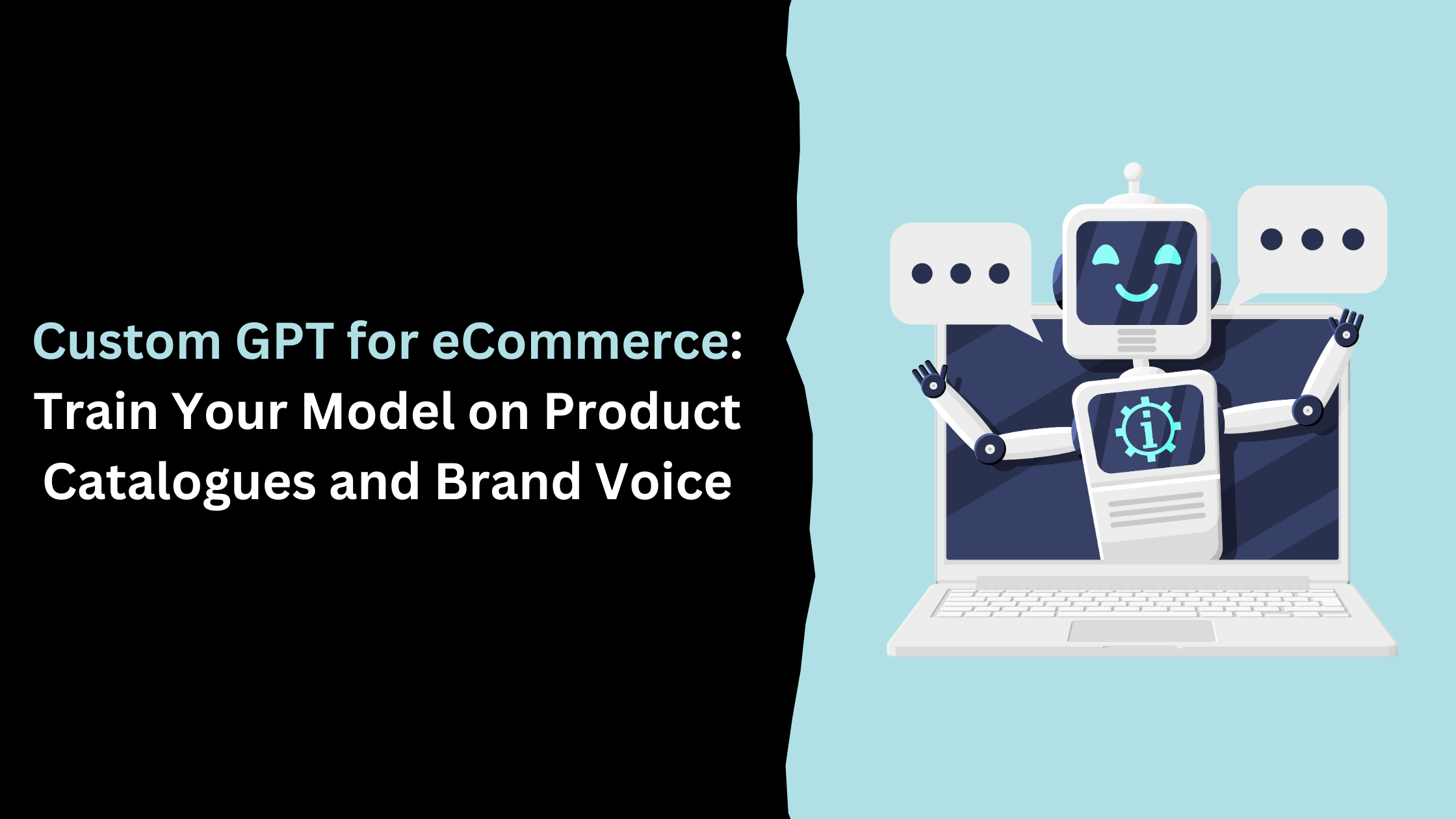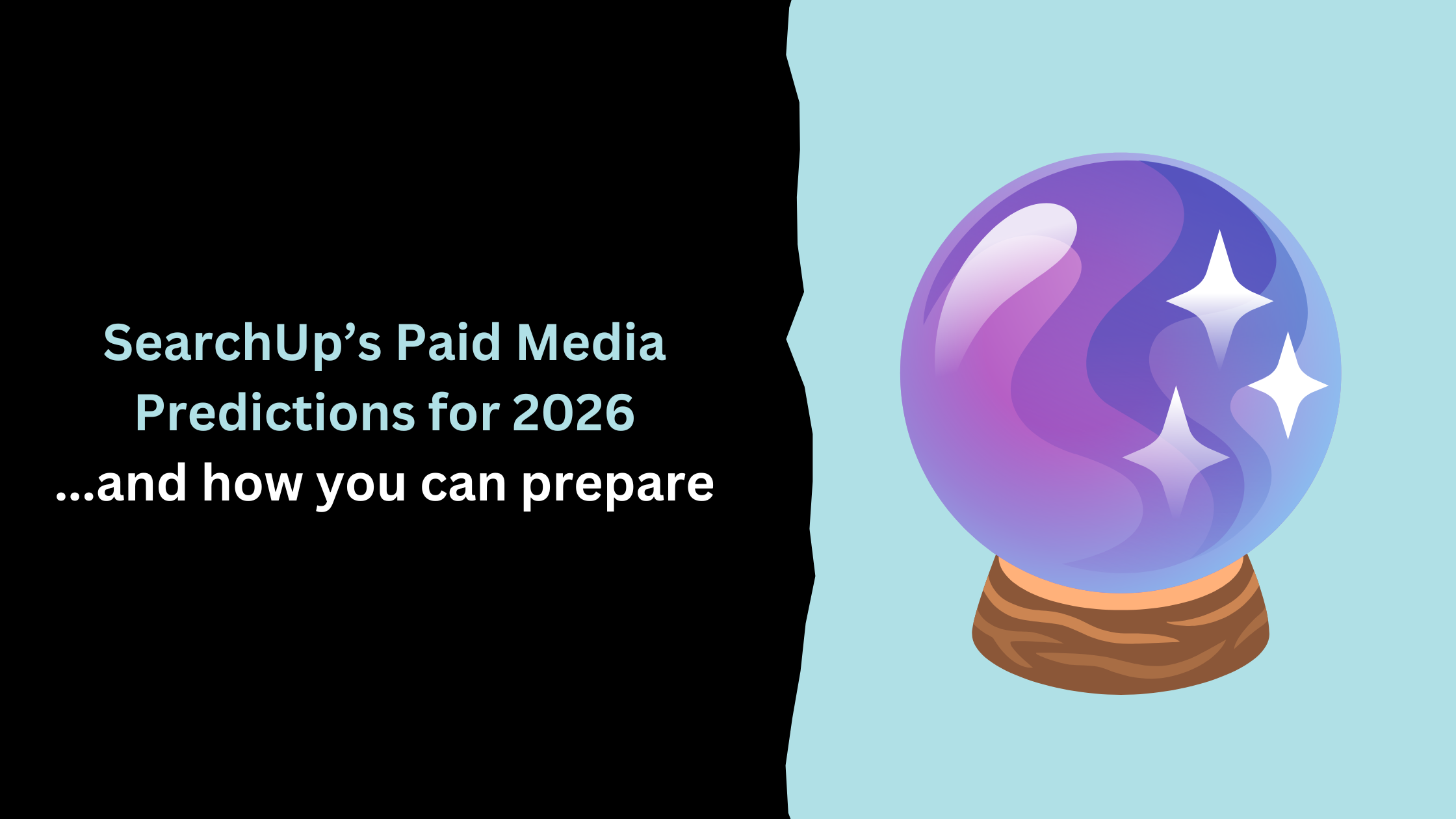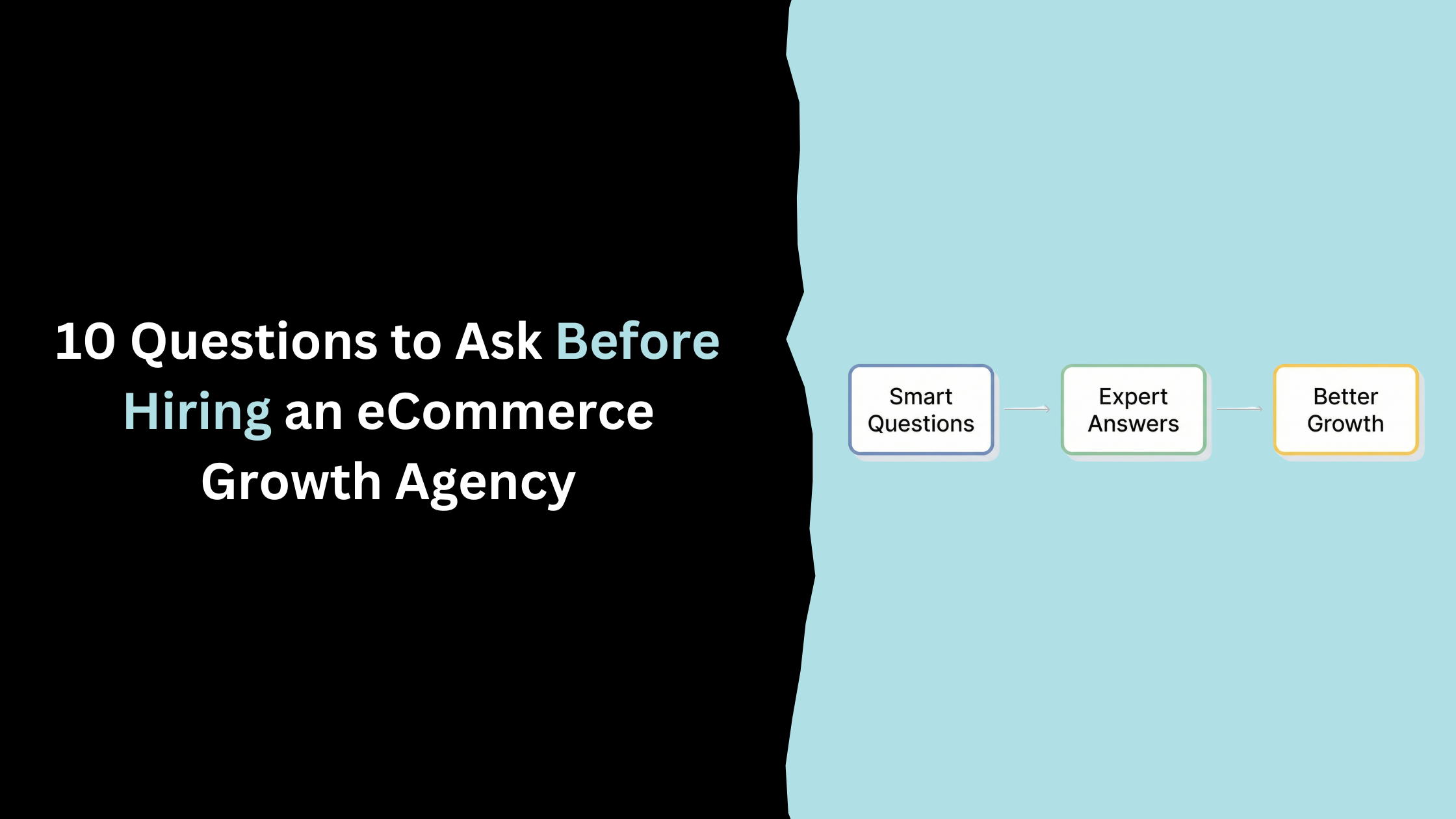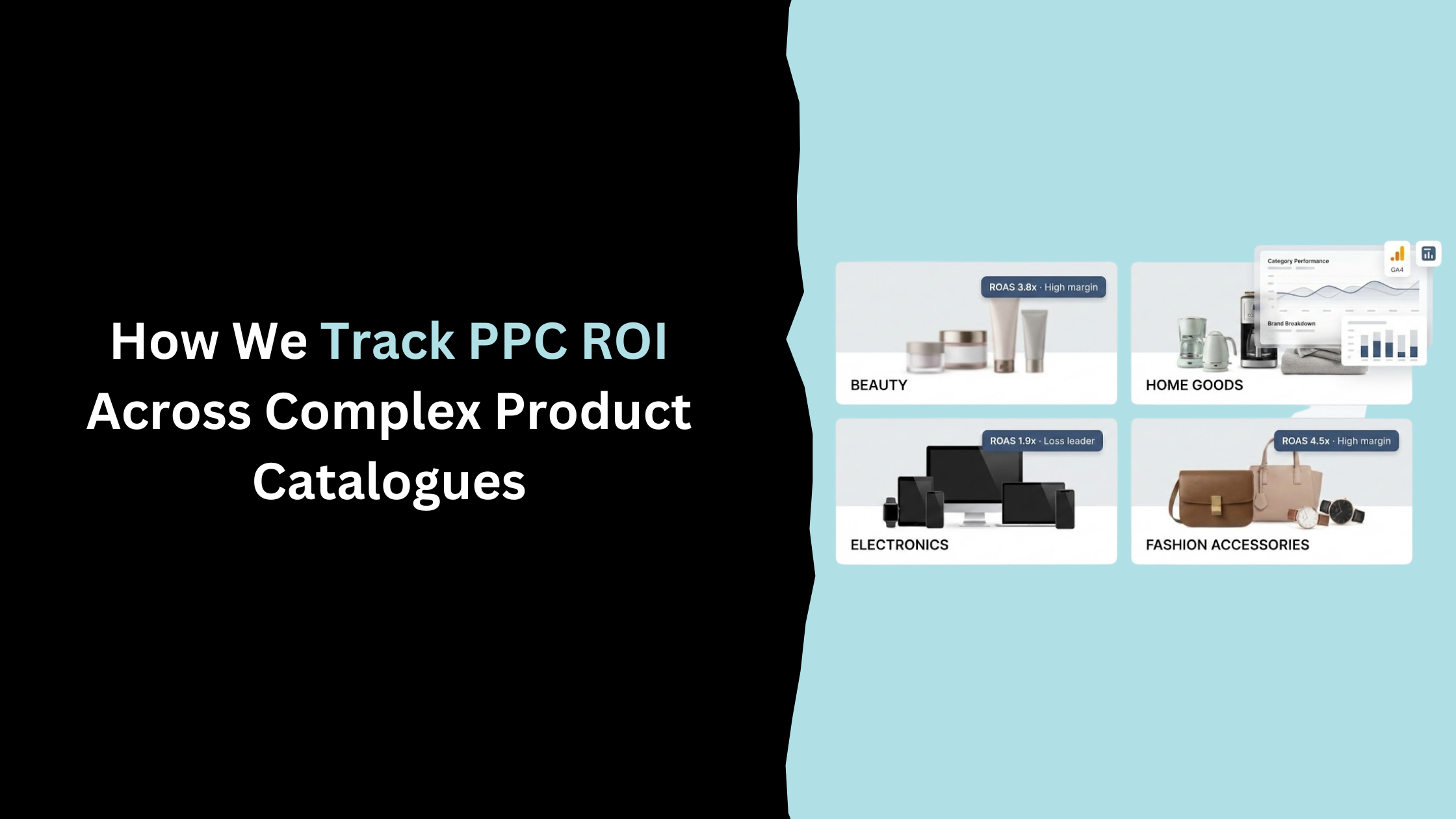Table of Contents
AI isn’t some distant future for marketing; It’s here, shaping how brands communicate, sell, and scale.
For eCommerce businesses, one of the most powerful moves you can make is training a custom GPT. Not a generic chatbot, not a plug-and-play tool, but a model fine-tuned to know your products and speak in your voice.
Why? Because your catalogue isn’t just a list of items. It’s your storefront, your sales pitch, your credibility. And your brand voice is what makes your store feel different from every other Shopify clone selling the same things.
A custom GPT can combine those two assets - catalogue + voice - into a scalable content engine.
Why Training a Custom GPT Matters
Let’s be honest. Most eCommerce copy sounds the same.
Product descriptions are often flat, generic, and rushed. Ads repeat the same tired phrasing. Emails lose their spark after the third campaign of the month.
That’s the gap a custom GPT fills.
Consistency Builds Trust
Customers instantly recognise when a brand has a clear voice. Whether they’re reading an Instagram caption or a returns policy, it should feel like the same personality is speaking. If your tone shifts wildly from platform to platform, you come across as sloppy, or worse, untrustworthy.
Speed Is Everything
Time kills momentum. If it takes your team weeks to launch a new product line because you’re stuck writing descriptions, you’re already behind. GPT workflows slash that cycle dramatically. Some teams have reported 10–20× faster content production - imagine writing in days what used to take months.
Conversion Isn’t Optional
Pretty words are useless if they don’t drive action. AI-optimised copy has been shown to lift CTR by 12.5% and boost conversion rates by 8.3% in eCommerce tests. That’s real money. Those are sales you can take to the bank.
Put simply: speed + consistency + measurable ROI = a competitive edge.
Step 1: Define Your Brand Voice
This is where most brands stumble.
They skip the step of documenting their voice and just “wing it” as they go. The problem? GPTs can’t guess your style; they mimic whatever you feed them. If your inputs are inconsistent, the outputs will be too.
Build a Voice Playbook
Think of it as a rulebook. It should answer questions like:
- Are we casual or formal?
- Do we use humour or stay serious?
- Which words do we avoid at all costs?
- Do we write in short bursts or detailed paragraphs?
For example, a minimalist skincare brand might want clean, scientific language with no hype. A streetwear label might lean into slang, cultural references, and attitude. Both are valid, but they need to be clear.
Document Real Examples
Instead of abstract guidelines, pull real snippets. Include product descriptions, social captions, or email intros that nailed the vibe. The clearer the examples, the easier it is for the GPT to learn.
Map It to Personas
Your brand doesn’t speak the same way to everyone. Identify your audience segments - new shoppers, repeat customers, wholesale buyers - and define subtle tone shifts for each. This makes your GPT adaptable, not robotic.
Step 2: Build Your Training Dataset
Now that you know how you want to sound, it’s time to gather the “diet” that your GPT will consume.
Collect Everything Relevant
Pull together product descriptions, FAQs, blog posts, social captions, email sequences, and ad copy. Don’t ignore support responses or even internal training docs, as they often reveal natural language patterns that matter.
Organise by Category
Don’t dump everything into one file. Group by content type (product data, marketing copy, customer support). This helps the GPT understand context, like when to be persuasive, when to be helpful, and when to be detailed.
Clean the Data
Messy data leads to messy outputs. Fix typos, remove outdated product info, and strip filler. If an item is discontinued, don’t include it - otherwise the GPT will happily generate fresh content for something you don’t even sell anymore.
Add Metadata Where Possible
If you can tag data with attributes like category, price, audience, or campaign type, do it. This structure gives the GPT richer context. For example: “Product: Sneakers / Category: Footwear / Tone: Playful.”
The better the input, the sharper the model.
Step 3: Choose a Training Path
Here’s where strategy comes in. You have two main routes:
1. Custom GPTs (No-Code)
If you’re on ChatGPT Plus or Enterprise, you can build a Custom GPT with no coding required. It’s drag-and-drop simple: upload your dataset, give it instructions, and you’re live. This option is best for marketers who want results quickly without technical headaches.
2. Fine-Tuning via API
This is the “pro” route. Using OpenAI’s fine-tuning API (or other LLM providers), you can train a model at a deeper level. This means more precision, more control over tone, and the ability to handle massive product catalogues. The trade-off: it requires technical chops and a bigger budget.
Which Should You Pick?
- Start small? Go with Custom GPTs.
- Scaling across thousands of SKUs? Fine-tuning pays off.
- Somewhere in the middle? Hybrid approaches work - test custom first, then graduate to fine-tuning when you’ve proven ROI.
Step 4: Train and Iterate
This is where theory meets practice.
Structure Your Dataset
Convert your data into formats like JSONL or CSV. Keep it organised by type and tone.
Set Parameters Thoughtfully
Epochs (how many times the model sees your data), batch size (how much it learns per round), and learning rate (how fast it adapts) all affect results. Don’t max everything out - start conservative, then test.
Test with Prompts Early
As soon as your first version is trained, start testing. Ask it to generate product descriptions, ad variations, or FAQs. Compare them to your existing copy. Does it sound like you? If not, tweak the data and retrain.
Refine Through Iteration
No one nails it on the first try. Expect multiple cycles of training, testing, and refining. Each loop gets the GPT closer to your perfect brand voice.
Step 5: Test, Validate, and Improve
Training doesn’t stop once the model is live.
A/B Test Everything
Run product pages with AI-generated copy against originals. Split email campaigns with GPT vs human copy. Compare performance in clicks, opens, and conversions.
Watch for Drift
Sometimes a GPT starts “drifting” from your tone if new prompts lead it off track. When that happens, pull it back with additional examples or retraining.
Keep Humans in the Loop
AI isn’t set-and-forget. Have editors review content for accuracy, tone, and compliance. The best systems are hybrids: AI for scale, humans for polish.
Use Cases That Actually Drive ROI
Custom GPTs aren’t just about shiny tech; they solve problems that bleed money if ignored:
- Product Descriptions: Generate thousands at once, all on-brand and non-repetitive.
- Ad Copy: Produce dozens of variations quickly, perfect for testing.
- Email Campaigns: Segment tone by audience and scale without writer burnout.
- Social Media: Stay consistent across channels without losing personality.
- Customer Support: Speed up FAQ replies while sounding human, not robotic.
Every one of these use cases ties directly to sales, customer experience, or operational efficiency.
Challenges and Watchouts
Let’s not sugarcoat it… GPTs aren’t magic.
Hallucinations Happen
Sometimes models confidently spit out nonsense. That’s why human oversight is critical.
Bias and Legal Risks
If your dataset contains bias or copyrighted phrases, the GPT can reproduce them. Review carefully before training.
Costs Add Up
Fine-tuning and API calls aren’t free. Budget for experimentation before rolling out at scale.
Final Thoughts
Training a custom GPT is one of the smartest moves an eCommerce brand can make.
You get speed (10–20× faster production), consistency (your brand voice everywhere), and performance gains (12.5% CTR lift, 8.3% conversion bump).
Start small. Train it on product descriptions. Run tests. Refine. Then roll it out to ads, emails, and beyond.
Because once you’ve seen what a custom GPT can do for your catalogue and your brand voice, going back to manual copywriting feels like using dial-up in the age of fibre internet.
Get in touch today
complete the form below for an informal chat about your business








